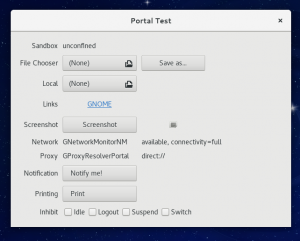gettext has seen quite some enhancements in recent years, after Daiki Ueno started maintaining it. It can now extract (and merge back) strings from diverse file formats, including many of the formats that are important for desktop applications. With gettext 0.19.8, there is really no need anymore to use intltool or GLib’s dated gettext glue (AM_GLIB_GNU_GETTEXT and glib-gettextize).
Since intltool still sticks around in quite a few projects, I thought that I should perhaps explain some of the dos and don’ts for how to get by with plain gettext. Javier Jardon has been tirelessly fighting a battle for using upstream gettext, maybe this will help him reaching the finish line with that project.
Extracting strings
xgettext is the tool used to extract strings from sources into .pot files.
In addition to programming languages such as C, C++, Java, Scheme, etc, it recognizes the following files by their typical file extensions (and it is smart enough to disregard a .in extension):
- Desktop files: .desktop
- GSettings schemas: .gschema.xml
- GtkBuilder ui files: .ui
- Appdata files: .appdata.xml and .metainfo.xml
You can just add these files to POTFILES.in, without the extra type hints that intltool requires.
One important advantage of xgettext’s xml support, compared to intltool, is that you can install .in files that are valid; no more tag mutilation like <_description> required.
Merging translations
The trickier part is merging translations back into the various file formats. Sometimes that is not necessary, since the file has a reference to the gettext domain, and consumers know to use gettext at runtime: that is the case for GSettings schemas and GtkBuilder ui files, for example.
But in other cases, the translations need to be merged back into the original file before installing it. In these cases, the original file from which the strings are extracted often has an extra .in extension. The tool that is doing this task is msgfmt.
Intltool installs autotools glue which can define make rules for many of these cases, such as @INTLTOOL_DESKTOP_RULE@. Gettext does not provide this kind of glue, but the msgfmt tool is versatile enough that you can write your own rules fairly easily, for example:
%.desktop: %.desktop.in
msgfmt --desktop -d $(top_srcdir)/po \
--template $< -o $@
Extending gettext
Gettext can be extended to understand new xml formats. To do so, you install .its and .loc files. The syntax for these files is explained in detail in the gettext docs. Libraries are expected to install these files for ‘their’ formats (GLib and GTK+ already do, and PolicyKit will do the same soon.
If you don’t want to wait for your favorite format to come with built-in its support, you can also include its files with your application; gettext will look for such files in $XDG_DATA_DIRS/gettext/its/.

